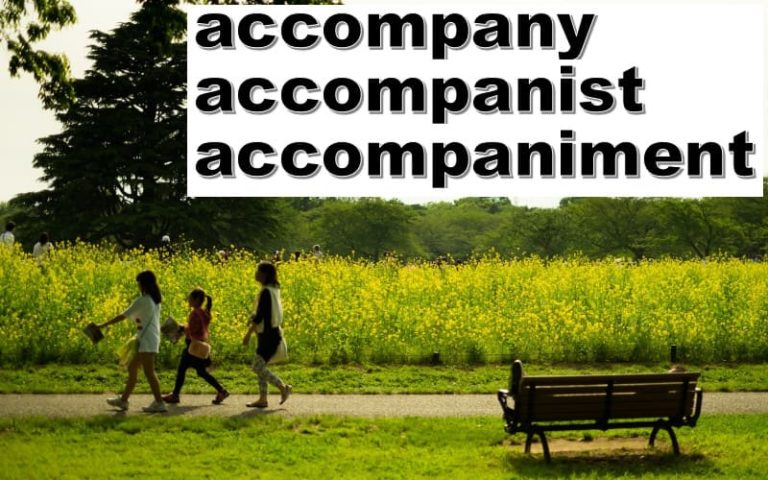

Accompanist synonym professional#
In addition to aiding the performance community to see collaborative piano as a viable professional option, Moore and Sanders also paved the way for leading solo pianists to consider collaborating. Since then, close to a hundred collaborative piano degree programmes have been established in conservatoires throughout the world. Following the establishment of the first collaborative piano degree programme at the University of Southern California in 1947, he pushed to establish a masters degree in collaborative piano at the Juilliard School when he joined its faculty in 1963. Sanders didn’t stop at changing the accepted terminology. One of his lasting contributions to the field was coining the term ‘collaborative pianist’. This opened a whole new door.’įollowing Moore’s initial efforts, pianist Samuel Sanders, who collaborated with the likes of Yo-Yo Ma, Itzhak Perlman and Mstislav Rostropovich, continued the fight for more equal footing. He was such a fabulous pianist that they complied. Gerald Moore came along and insisted that he wouldn’t record anything unless he had his name on the label.

‘Pianists were hired into studios to make recordings with artists, and they didn’t even put the name of the pianist on the label. ‘Think way back to the early 1900s,’ says professor of collaborative piano at the Cleveland Institute Virginia Weckstrom. Gerald Moore with baritone Dietrich Fischer-Dieskau In the opening chapter, Moore admits that he used to think ‘the accompanist was a sort of caddie who carried the violinist’s fiddle… but after some years of work and experience I began to realise how important and interesting the musical life of an accompanist could and should be.’ Moore’s book The Unashamed Accompanist was published in 1943. Historic collaborationsĪn early champion for piano accompanists’ rights was English pianist Gerald Moore, who collaborated with such instrumentalists as Pablo Casals and Yehudi Menuhin. The result has brought about a new title – collaborative pianist – and a paradigm shift in the classical music world, which views pianists as equal partners rather than as subordinates. The word “accompanist” is a total mistake.’Īttitudes have begun to change in recent years, thanks to the pianists and other instrumentalists who have rallied together to eliminate the hierarchy implied by the term that has, well, accompanied pianists for so long. ‘A lot of the repertoire, like Beethoven and Mozart sonatas, is written for piano and violin. ‘It’s true: there’s no such thing as an accompanist,’ says Perlman. But some of the world’s leading classical musicians, including Itzhak Perlman (pictured), take offence at this misconception. Not good enough for solo careers, they are hired to perform a service: to obey their musical partner’s instructions without question. There has long been a stereotype in the performance community that accompanists are inferior musicians. This article is from the March 2010 issue of The Strad Discover more Featured Stories like this in The Strad Playing Hub


 0 kommentar(er)
0 kommentar(er)
